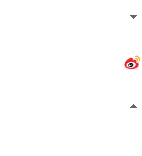JQuery的最佳實(shí)踐
1.開發(fā)插件所參考的典型模板
 //?
//? //?create?closure?
//?create?closure? //?
//?
 (function($)?
(function($)? {?
{? //?
//? //?plugin?definition?
//?plugin?definition? //?
//?
 $.fn.hilight?=?function(options)?
$.fn.hilight?=?function(options)? {?
{? debug(this);?
debug(this);? //?build?main?options?before?element?iteration?
//?build?main?options?before?element?iteration?
 var?opts?=?$.extend(
var?opts?=?$.extend( {},?$.fn.hilight.defaults,?options);?
{},?$.fn.hilight.defaults,?options);? //?iterate?and?reformat?each?matched?element?
//?iterate?and?reformat?each?matched?element?
 return?this.each(function()?
return?this.each(function()? {?
{? $this?=?$(this);?
$this?=?$(this);? //?build?element?specific?options?
//?build?element?specific?options?
 var?o?=?$.meta???$.extend(
var?o?=?$.meta???$.extend( {},?opts,?$this.data())?:?opts;?
{},?opts,?$this.data())?:?opts;? //?update?element?styles?
//?update?element?styles?
 $this.css(
$this.css( {?
{? backgroundColor:?o.background,?
backgroundColor:?o.background,? color:?o.foreground?
color:?o.foreground? });?
});? var?markup?=?$this.html();?
var?markup?=?$this.html();? //?call?our?format?function?
//?call?our?format?function? markup?=?$.fn.hilight.format(markup);?
markup?=?$.fn.hilight.format(markup);? $this.html(markup);?
$this.html(markup);? });?
});? };?
};? //?
//? //?private?function?for?debugging?
//?private?function?for?debugging? //?
//?
 function?debug($obj)?
function?debug($obj)? {?
{? if?(window.console?&&?window.console.log)?
if?(window.console?&&?window.console.log)? window.console.log('hilight?selection?count:?'?+?$obj.size());?
window.console.log('hilight?selection?count:?'?+?$obj.size());? };?
};? //?
//? //?define?and?expose?our?format?function?
//?define?and?expose?our?format?function? //?
//?
 $.fn.hilight.format?=?function(txt)?
$.fn.hilight.format?=?function(txt)? {?
{? return?'<strong>'?+?txt?+?'</strong>';?
return?'<strong>'?+?txt?+?'</strong>';? };?
};? //?
//? //?plugin?defaults?
//?plugin?defaults? //?
//?
 $.fn.hilight.defaults?=?
$.fn.hilight.defaults?=? {?
{? foreground:?'red',?
foreground:?'red',? background:?'yellow'?
background:?'yellow'? };?
};? //?
//? //?end?of?closure?
//?end?of?closure? //?
//? })(jQuery);
})(jQuery);2.很多人喜歡在javascript中或者在后端服務(wù)器response輸出中把html標(biāo)記和數(shù)據(jù)混雜一起,然后輸出到div中,這樣非常難維護(hù)。
?? 比較好的做法是使用javascript模板(參加JQuery JTemplate插件):
????? 1)在DIV中寫入模板文件,并隱藏DIV? $("#divID").hidden()
????? 2) 通過DIV ID獲取模板定義,解析并綁定數(shù)據(jù),
????? 3)生成html,重新寫到DIV中: $("#divID").html(templateResult);
????? 4)顯示DIV $("#divID").show()
????? 具體例子參見:
????? 前端工程師如何提高設(shè)計(jì)的功力(三)基于JQuery的分層設(shè)計(jì)
?????
????? 用jQuery和jTemplates插件實(shí)現(xiàn)客戶端分頁的表格展現(xiàn)?
3.盡可能的提供默認(rèn)參數(shù),盡可能的滿足80%的需求
??

?2

 var?defaults?=?
var?defaults?=? {???
{????3
 ???length:?300,???
???length:?300,????4
 ???minTrail:?20,???
???minTrail:?20,????5
 ???moreText:?"more",???
???moreText:?"more",????6
 ???lessText:?"less",???
???lessText:?"less",????7
 ???ellipsisText:?"
???ellipsisText:?" "??
"???8
 ??};???
??};????9
 ?????
?????10
 ??var?options?=?$.extend(defaults,?options);??
??var?options?=?$.extend(defaults,?options);???? 4.使用JQuery的selector中,盡量加上上下文限制遍歷的空間,不僅提搞速度,更重要的是避免不必要的錯(cuò)誤。
?????? $('input, textarea, select,', this)
?? 5.建立一個(gè)完備的log 體系
??????

 jQuery.fn.log?=?function?(msg)?
jQuery.fn.log?=?function?(msg)? {
{ ??????console.log("%s:?%o",?msg,?this);
??????console.log("%s:?%o",?msg,?this); ??????return?this;
??????return?this; ??};
??};
 $(root).find('li.source>?input:checkbox').log("sources?to?uncheck").removeAttr("checked");
$(root).find('li.source>?input:checkbox').log("sources?to?uncheck").removeAttr("checked");???6.關(guān)注JQuery的自定義事件
?????
 jQuery中幾個(gè)自定義的事件:
jQuery中幾個(gè)自定義的事件: (1)hover(fn1,fn2):一個(gè)模仿懸停事件(鼠標(biāo)移動(dòng)到一個(gè)對(duì)象上面及移出這個(gè)對(duì)象)的方法。當(dāng)鼠標(biāo)移動(dòng)到一個(gè)匹配的元素上面時(shí),會(huì)觸發(fā)指定的第一個(gè)函數(shù)。當(dāng)鼠標(biāo)移出這個(gè)元素時(shí),會(huì)觸發(fā)指定的第二個(gè)函數(shù)。
(1)hover(fn1,fn2):一個(gè)模仿懸停事件(鼠標(biāo)移動(dòng)到一個(gè)對(duì)象上面及移出這個(gè)對(duì)象)的方法。當(dāng)鼠標(biāo)移動(dòng)到一個(gè)匹配的元素上面時(shí),會(huì)觸發(fā)指定的第一個(gè)函數(shù)。當(dāng)鼠標(biāo)移出這個(gè)元素時(shí),會(huì)觸發(fā)指定的第二個(gè)函數(shù)。 //當(dāng)鼠標(biāo)放在表格的某行上時(shí)將class置為over,離開時(shí)置為out。
//當(dāng)鼠標(biāo)放在表格的某行上時(shí)將class置為over,離開時(shí)置為out。 $("tr").hover(function(){
$("tr").hover(function(){ $(this).addClass("over");
$(this).addClass("over"); },
}, ???????function(){
???????function(){ ???????$(this).addClass("out");
???????$(this).addClass("out"); });
}); (2)ready(fn):當(dāng)DOM載入就緒可以查詢及操縱時(shí)綁定一個(gè)要執(zhí)行的函數(shù)。
(2)ready(fn):當(dāng)DOM載入就緒可以查詢及操縱時(shí)綁定一個(gè)要執(zhí)行的函數(shù)。 $(document).ready(function(){})
$(document).ready(function(){}) //頁面加載完畢提示“Load?Success”,相當(dāng)于onload事件。與$(fn)等價(jià)
//頁面加載完畢提示“Load?Success”,相當(dāng)于onload事件。與$(fn)等價(jià) (3)toggle(evenFn,oddFn):?每次點(diǎn)擊時(shí)切換要調(diào)用的函數(shù)。如果點(diǎn)擊了一個(gè)匹配的元素,則觸發(fā)指定的第一個(gè)函數(shù),當(dāng)再次點(diǎn)擊同一元素時(shí),則觸發(fā)指定的第二個(gè)函數(shù)。隨后的每次點(diǎn)擊都重復(fù)對(duì)這兩個(gè)函數(shù)的輪番調(diào)用。
(3)toggle(evenFn,oddFn):?每次點(diǎn)擊時(shí)切換要調(diào)用的函數(shù)。如果點(diǎn)擊了一個(gè)匹配的元素,則觸發(fā)指定的第一個(gè)函數(shù),當(dāng)再次點(diǎn)擊同一元素時(shí),則觸發(fā)指定的第二個(gè)函數(shù)。隨后的每次點(diǎn)擊都重復(fù)對(duì)這兩個(gè)函數(shù)的輪番調(diào)用。 ???????//每次點(diǎn)擊時(shí)輪換添加和刪除名為selected的class。
???????//每次點(diǎn)擊時(shí)輪換添加和刪除名為selected的class。 ???????$("p").toggle(function(){
???????$("p").toggle(function(){ ??????????????$(this).addClass("selected");???
??????????????$(this).addClass("selected");??? ???????},function(){
???????},function(){ ??????????????$(this).removeClass("selected");
??????????????$(this).removeClass("selected"); ???????});
???????}); (4)trigger(eventtype):?在每一個(gè)匹配的元素上觸發(fā)某類事件。
(4)trigger(eventtype):?在每一個(gè)匹配的元素上觸發(fā)某類事件。 例如:
例如: ???????$("p").trigger("click");??????????????//觸發(fā)所有p元素的click事件
???????$("p").trigger("click");??????????????//觸發(fā)所有p元素的click事件 (5)bind(eventtype,fn),unbind(eventtype):?事件的綁定與反綁定
(5)bind(eventtype,fn),unbind(eventtype):?事件的綁定與反綁定 從每一個(gè)匹配的元素中(添加)刪除綁定的事件。
從每一個(gè)匹配的元素中(添加)刪除綁定的事件。 例如:
例如: $("p").bind("click",?function(){.text());});???????//為每個(gè)p元素添加單擊事件
$("p").bind("click",?function(){.text());});???????//為每個(gè)p元素添加單擊事件 $("p").unbind();???????//刪除所有p元素上的所有事件
$("p").unbind();???????//刪除所有p元素上的所有事件 $("p").unbind("click")???????//刪除所有p元素上的單擊事件
$("p").unbind("click")???????//刪除所有p元素上的單擊事件
7.利用jQuery 內(nèi)置的CSS選擇器selectors來提高效率.
如$(":input??")? 的到頁面上所有tag 是input的Form控件。
如果在加上[attribute=value]??就更方便了如:$(" input[name='firstName']") 是查找DOM name是firstName的Form控件.
//下面是得到多選下拉框的所有的選擇的值,放入到map中。
jQuery('option:selected', this).each( function() {
??? a.push({name: n, value: this.value});
??? });
8. return flase 來阻止事件冒泡,? 如:屏蔽select下拉框的滾輪事件
$(document).ready(function(){
??????? $("select").each(function(){
??????????? $(this).bind("mousewheel",function(){
??????????????? return false;
??????????? });
??????? });
??? });
posted on 2008-12-11 19:33 Speed 閱讀(4618) 評(píng)論(2) 編輯 收藏 所屬分類: 前端設(shè)計(jì) 、JQuery

